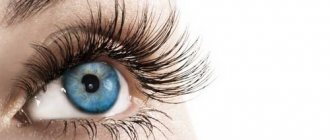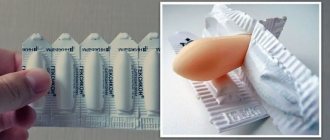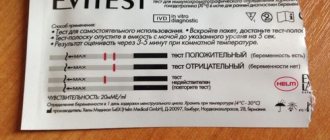What are the harms of a solarium during menstruation?
During menstruation, all women undergo various changes in their bodies. Hormone levels decrease and menstruation begins, which, under the influence of heat, can provoke heavy bleeding. These days, doctors do not recommend taking a bath, visiting the bathhouse or sauna. This also applies to staying in a solarium.
It is harmful to go to a solarium during menstruation because:
- The number of discharges increases. It is known that the amount of blood released during menstruation depends on the ambient temperature. The hotter and hotter the air, the faster blood flows through the blood vessels. Therefore, you should avoid tanning procedures in a solarium during your period.
- A woman’s body during menstrual bleeding is highly vulnerable to various kinds of negative effects.
- Skin sensitivity increases.
- Skin melanin production is reduced to a minimum.
- General health may worsen, as blood loss affects the woman’s health. You may feel dizzy, your blood pressure may drop or rise, and you may feel very weak.
- Having chronic diseases can cause complications. This includes cervical erosion, mastopathy, adnexitis, cysts, endometriosis and other gynecological and endocrinological diseases.
- The tan will be uneven. Since hormone levels fluctuate greatly during your period, this can affect the uniformity of your tan. Often women experience skin pigmentation, pustular diseases and changes in the shade of the skin during menstruation. Therefore, sometimes you may notice uneven adhesion of the tan. To restore the balance of the skin, in such cases, it is recommended to pay significant attention to protective products.
Many women are interested in whether it is possible to sunbathe during menstruation if there is air conditioning in the salon. It turns out that even if the solarium is well cooled with the help of modern household appliances, it is not worth visiting. It is unknown how the female body will respond to temperature fluctuations. As a last resort, a visit to the solarium can be postponed to the last days of menstruation, when the bleeding is not too heavy.
Reviews
Reviews about tanning in a solarium during menstruation:
In conclusion, several conclusions need to be drawn:
- Going to a solarium during menstruation is a dangerous procedure that may be accompanied by negative consequences.
- When tanning using ultraviolet rays, you should carefully follow all the rules of safe tanning.
- Before visiting the salon, you should assess your general health and take advantage of all the expert advice for a beautiful and harmless tan.
Girls who want to get a good, beautiful and lasting skin tone must be careful about their health, otherwise diseases may appear that can have dangerous complications.
Sources:
https://promesyachnye.ru/soljarii-vo-vremya-mesyachnyx/ https://krasgmu.net/publ/zdorove/zhenskie_shtuchki/mozhno_li_khodit_v_soljarij_vo_vremja_mesjachnykh/40-1-0-1197 https://woman-centre.com/ovulyaciya -i-menstruacii/proceduri-i-manipulyacii/solyariy.html
Recommendations for safe visits to the solarium
Solariums have been popular for a long time. This is an excellent remedy for acne, dermatitis and some types of rashes. There you can compensate for the lack of vitamin D, which ensures the normal functioning of the body. What can we say about an even golden tan, which gives every woman additional attractiveness. To get a beautiful tan, you should adhere to the following rules:
- If your period begins, it is better to reschedule your visit to the solarium to another time, at least for the last days of menstruation;
- If a woman feels even a little unwell (dizzy or stomach hurts from loss of blood), it is recommended to refuse the procedure and not risk her own health;
- Water procedures should be carried out 2 hours before or 3 hours after. During procedures, it is better to use a tampon instead of a pad, and then replace it with a pad. For hygienic purposes, it is better to leave the lower part of the underwear on the body.
- It is recommended to cover vulnerable areas: nipples with stikini (special circles), put a cap on your hair, and apply hygienic lipstick to your lips. Contact lenses must be removed and special solarium glasses must be put on your eyes.
- It is recommended to use cosmetic products as much as possible. Tanning products in a solarium differ from those used to obtain a regular sun tan. Artificial tanning is considered softer and harmless than natural tanning, as it has a lower degree of radiation. Tanning equipment does not emit harmful ultraviolet waves. On the eve of the solarium, it is advisable to cleanse the skin so that the tan is even.
How to prepare for a solarium?
There is no clear answer to the question - is it possible to visit a solarium if you have your period? It happens that the situation is urgent and if you are still planning to go to the solarium during your period, then it is worth considering some nuances. To reduce the risks of negative consequences, you should take into account:
- It is better to avoid visiting the salon in the midst of discharge. Wait until their number decreases somewhat, for example, you can postpone the trip to the 3rd–4th day of menstruation.
- Immediately before the procedure, use a tampon, and after it, change the tampon to a pad. This will help avoid the occurrence of an inflammatory process.
- To sufficiently moisturize the skin, water procedures 2 hours before exposure to ultraviolet rays and 3 hours after will be useful. You shouldn't take a shower right away. Heated skin can be brought back to normal with an after-sun cream with a cooling and moisturizing effect.
- Do not use standard tanning creams. Give preference to cosmetics designed specifically for artificial tanning.
- Protect delicate areas: lubricate your lips, stick a sticky on your areolas and nipples, put glasses on your eyes, a cap on your hair, and leave your intimate area in underwear.
- Drink plenty of fluids. After the session and shower, try to avoid physical activity and take time to rest in a lying position to avoid excessive bleeding.
Beauty, of course, requires sacrifice, but it is not necessary to make such a big sacrifice, because a solarium is not even a trip to the sea. You can walk at different time intervals. All the same, after one procedure you will not get a full, even tan, and a short break is unlikely to have a significant impact on the quality of the tan as a whole.
How to visit a solarium on critical days, if you couldn’t postpone it
If you are not convinced of the need to sunbathe in a solarium during your period, you should at least follow some rules that can slightly slow down the harmful effects of ultraviolet radiation on the body:
- The tampon used during tanning must be replaced with a pad immediately after the procedure. Due to the fact that any hygiene product is heated due to the high temperature inside the cabin, it will perform the same role for bacteria as soil does for plants. Unlike tampons, the pad does not interact with the vagina itself, so the chance of continued “infection” after the procedure is significantly reduced.
- We must not forget about the cream that protects against the harmful effects of radiation: excessive exposure to radiant lamps in the cabin can damage the skin and leave a burn on it.
Moreover, there is no particular point in being inside the cabin due to the inhibition of melanin synthesis.
- To make you feel better, you need to drink a lot of clean water. Firstly, it will help cool the body and, therefore, recover after the procedure, secondly, it will have a beneficial effect on the passage of critical days, since its use can prevent fluid retention and the appearance of edema, and thirdly, it has an excellent effect on the general skin condition and improves it.
- For a speedy recovery you need rest. Quiet time spent reading a book or your favorite TV series without any physical or psychological stress can help the body recover as quickly as possible from the negative impact of a beauty session.
Negative manifestations
During your period, you can go to the solarium, but you need to understand what harm the procedure can cause.
Most often, women encounter the following negative manifestations::
- discharge becomes more intense;
- skin becomes more sensitive;
- possible exacerbation of chronic diseases;
- The tan may not set evenly.
The air temperature determines how quickly the blood moves through the blood vessels. The air temperature in the solarium is quite high, and the female body is very sensitive during menstruation, so the amount of menstrual flow can increase significantly.
Chronic diseases include primarily gynecological ones . This may be a cyst, mastopathy and cervical erosion. During menstruation, hormones surge in the female body, so the tan may lie unevenly on the skin.
Sometimes, after visiting a solarium during menstruation, , pigmentation problems and an allergic rash may occur Sudden changes in blood pressure are fraught with general weakness, dizziness and nausea.
After receiving artificial tanning, the painful symptoms that accompany menstruation may increase significantly. Another negative manifestation is cycle failure or complete cessation of menstruation .
Not everyone experiences complications after receiving artificial tanning. However, their probability is quite high.
The procedure should be abandoned if there is a gynecological disease, heavy and painful periods. Otherwise, during menstruation, you can visit the solarium. You must first consult with a gynecologist.
Dermatologists' opinion
Many dermatologists and cosmetologists argue that going to a solarium during menstruation is not the best idea, as it will lead to ineffective results.
Their statement is based on the fact that during menstruation there is an increase in the amount of estrogens and progesterones.
During this period, the skin reacts poorly to various influences, so the tan may not go on well, rashes and peeling will appear. During menstruation, the amount of melanin decreases significantly, so the tan may not last at all or lie unevenly.
Main contraindications
There are a number of contraindications, in the presence of which you should avoid visiting the solarium. They are:
- gynecological diseases;
- pathologies of the thyroid gland;
- unstable menstrual cycle;
- severe pain and cramps in the lower abdomen;
- diseases of the genitourinary system;
- neurosis;
- copious bleeding.
Before going to the salon, you should definitely consult with a gynecologist and choose the right time. Otherwise, there may be serious complications, including infertility.
The benefits of solarium
The first solariums appeared in 1895. In those days they were used to treat skin tuberculosis and smallpox. 30 years later, mass production of solariums with therapeutic effects opened in Germany. Every year, the popularity of solariums as medical equipment increased; with their help, skin diseases were cured; ultraviolet rays were prescribed to pregnant women and children.
The solarium emits two types of rays: alpha and beta, while the sun also transmits harmful gamma rays, which have destructive power. In this regard, visiting a solarium is much safer than traditional beach tanning.
What is the benefit of the rays received when visiting a solarium?
- Cleansing sebaceous glands, getting rid of acne
- Improving capillary blood circulation (skin becomes smooth)
- Improves skin tissue nutrition
- Vitamin D is produced, which is necessary for the absorption of phosphorus and calcium.
- The overall tone of the body increases and the immune system is strengthened.
Indications for visiting a solarium include people with fungal skin infections, cardiovascular diseases, patients with bronchitis, rickets, etc.
What is the opinion of gynecologists?
More than 85% of gynecologists strictly prohibit resorting to the procedure. This is due to the activation of blood circulation. Increases the likelihood of heat stroke. During the procedure there is a risk of dizziness, nausea, and arrhythmia. Blood pressure starts to spike. Gynecologists say that manipulation during critical periods is most dangerous for women who have various cardiovascular pathologies.
The period of blood clotting is reduced. There may be rapid bleeding.
It can be stopped only after using various medications.









